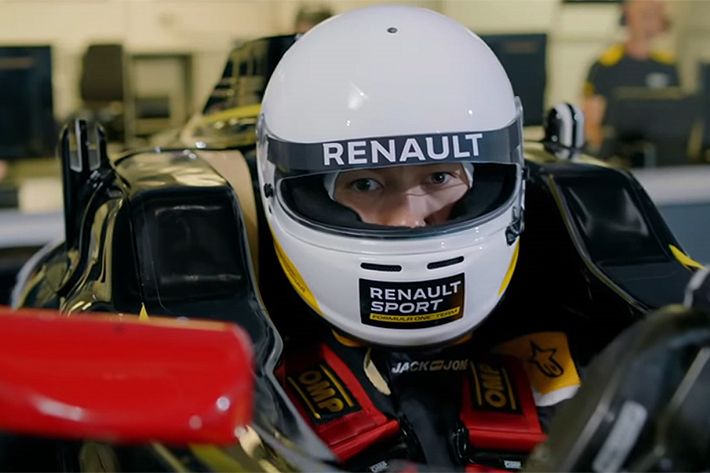
© Renault
THE ALL IMPORTANT CORRELATION
Linking the simulator’s virtual environment to the real world is what correlation is all about. Without it, digital data and validation collected in the dark room is useless. Ben Morgan explains how correlation is regularly checked and substantiated.
“One of the jobs of our race drivers is to validate the correlation. They review the last couple of tracks we have raced at. We will run the same set-up they ran at the track, and we check how well we match the car’s behaviour [in the simulator].
“It is something we do regularly because it is very important that we maintain that correlation.
“At this stage of the year [in October], it is generally very good because we understand the car very well. Maybe not so good in March because we don’t have a handful data of running it. But we try to develop the correlation very quickly.
“During winter testing, as well as testing the car, we are also analysing the behaviour of the car, that is a good opportunity to improve the correlation, so that when we go to Melbourne we have a very good simulation.”

© Renault
ONE HUNDRED VIRTUAL DAYS OF TESTING
“The reason for simulator use is that on track we are very limited in how much testing we can do. Here, we are completely unrestricted, we usually do around a hundred days testing a year, so two or three a week.
“During a test day we can cover 120-130 laps quite easily, it is like a track test day. We go through a lot of test items here. Grand Prix drivers come once a month, depending on the calendar and the items to be tested.
“We usually look at races that have gone by - what could have we done better, how can we learn from the past races - and also at the races ahead (trying to develop a set up and seeing how the car is going to behave at the coming track).
“But most of our work is done by development drivers. We have a very close link to the Renault Sport Academy: we have access to some very talented, very professional drivers.
“They are very familiar with the simulator, they give us very good feedback. Of course, we record data as well, we actually gather more data on the simulator in one run than we would in the car.
“Together with the driver’s feedback, it gives us a very rich [amount] of information for making decisions on how to develop the car and how to make it quicker.”
Drivers aren’t suited and booted when they work in the simulator, but in most cases they do wear their helmet. It takes three people to operate the sim and several other IT technicians to collect and manage the data.
It is time to leave the virtual world behind however and find our way to Enstone’s ‘torture chamber’, a facility where a car’s suspensions are tested and improved. But that’s a feature for another day…






